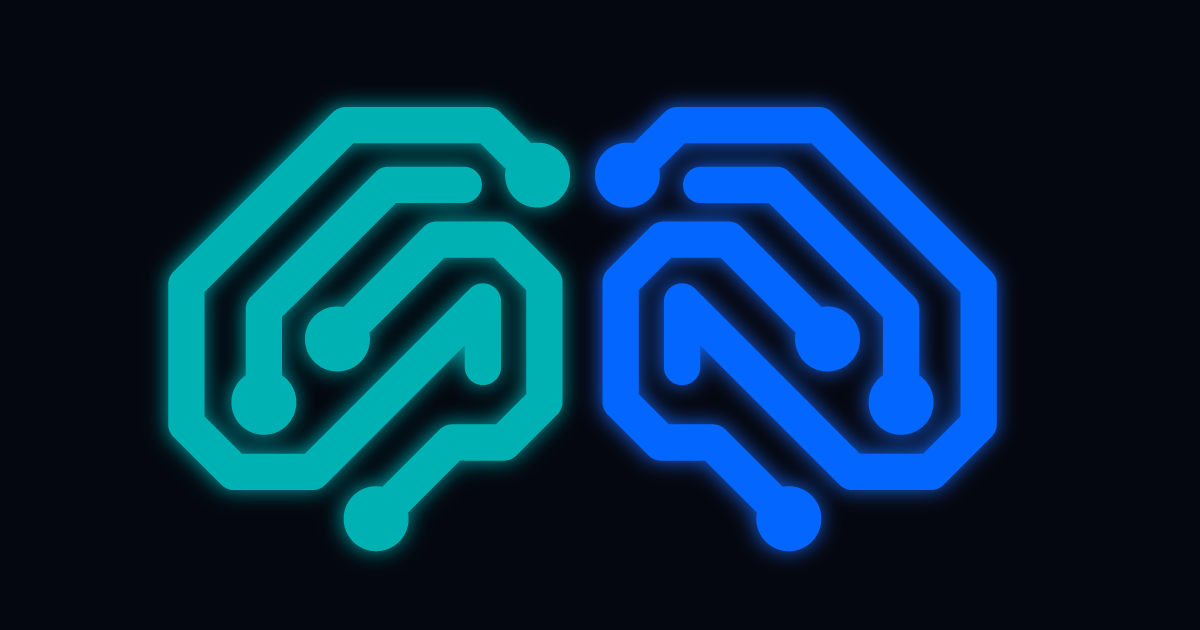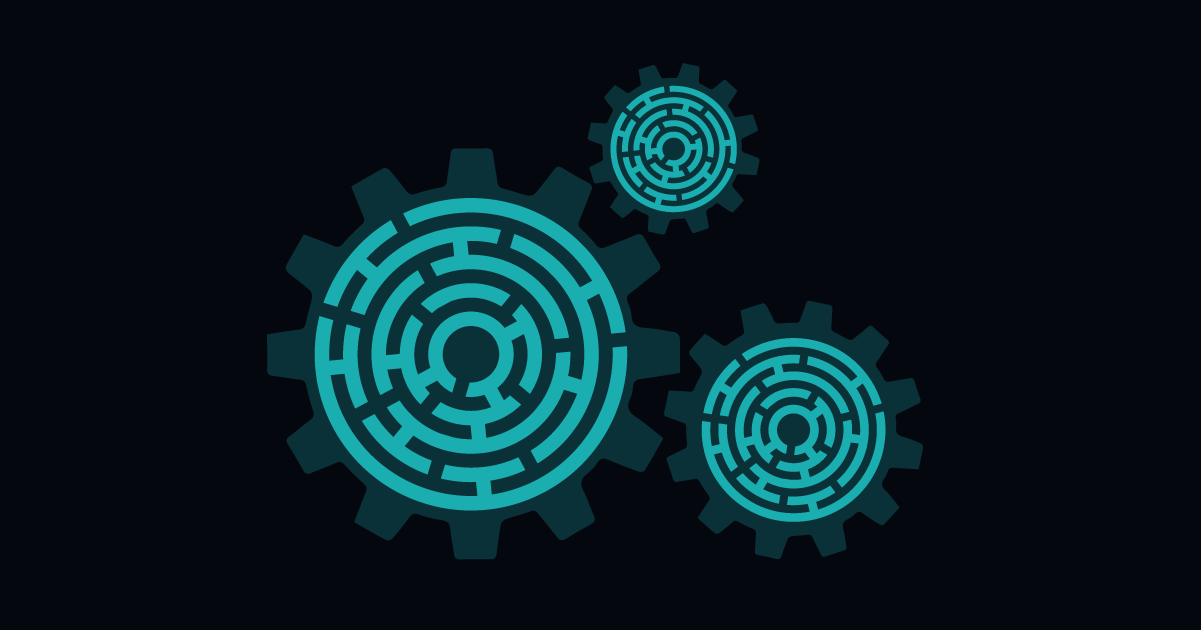
When Bots Grow Brains: RPA and Agentic AI For the Win
Subscribe to receive the latest content and invites to your inbox.
For a long time, robotic process automation (RPA) was the fastest way to scale repetitive digital work. Bots copied, clicked, and executed rule-based tasks faster than any human. They reduced error rates and delivered early wins for efficiency.
Sounds just fine, right? Prepare for a Matrix moment, because the truth is that IT teams built RPA only for predictability. It could follow instructions, but it couldn’t adapt when something unexpected happened.
Modern business needs are forcing automation to evolve past predictability. Artificial intelligence is no longer just analyzing data; it’s learning how to take action. When AI becomes agentic, automation stops being reactive and starts being autonomous.
The result is a new class of enterprise capability where RPA and agentic AI work together to create self-directed, self-healing systems. It’s the foundation of Zero Ticket IT, where issues resolve themselves before anyone ever clicks “submit.”
RPA: The Foundation That Started It All
Believe me when I say that RPA’s value to the enterprise is undisputed. It gave IT and business teams a fast, code-free way to automate structured, repeatable processes. Service desks used bots to reset passwords, HR automated onboarding tasks, and finance departments accelerated reconciliations.
RPA delivered consistency, scalability, and measurable time savings. However, it also revealed its own limits:
- Rule-bound logic. RPA follows scripts. When variables change, it breaks.
- Limited context. It can’t interpret why a process failed or decide what to try next.
- Maintenance overhead. Every system update or UI change requires human intervention.
In short, RPA automated tasks but not decisions. Enterprises soon realized that while bots worked tirelessly, they couldn’t work intelligently. To move faster (and smarter), they needed automation that could understand goals and not merely execute steps.
Agentic AI: The Digital Synapses Fire Up
Agentic AI represents the next leap for IT and the organizations and customers it serves. It brings reasoning, context, and autonomy to automation. Instead of executing only what it’s told, an agentic system perceives what’s happening, determines intent, and acts toward a defined outcome.
Whereas RPA has to rely on explicit rules, agentic AI relies on understanding:
- It interprets natural language requests.
- It correlates data across tools to grasp context.
- It decides which workflow to trigger or when to create one.
Imagine a virtual engineer that doesn’t wait for a ticket. It notices a service degradation, investigates probable causes, executes a fix, documents the resolution, and learns from the event to prevent recurrence.
That’s not the Twilight Zone; that’s agentic behavior. It’s AI that acts as an agent on behalf of IT, continuously improving through feedback loops.
READ MORE: 4 Everyday IT Headaches You Can Eliminate with Enterprise IT Automation
RPA and Agentic AI Together: The Smarter Model
RPA isn’t obsolete. It’s the muscle, whereas agentic AI is the brain. When their powers combine, they form a closed-loop system where intelligence drives action, then action generates new intelligence.
- Decision + Execution. Agentic AI interprets the problem and triggers the right RPA workflow.
- Learning + Optimization. RPA returns data that refines the agent’s logic and response models.
- Speed + Scale. Together they deliver consistent, context-aware automation across domains.
Here’s a quick example that spells this model out a bit more:
- RITA, Resolve’s AI service-desk agent, detects a pattern of failed VPN logins.
- It correlates device data and user context, determines a certificate issue, and initiates an automated fix.
- RPA handles the procedural steps: resetting credentials, pushing updates, verifying access.
- RITA confirms resolution with the user, updates the ITSM record, and feeds the insight back to Jarvis, Resolve’s AI workflow builder, which refines the automation for future prevention.
No repetitive ticket. No agonizing wait. Just continuous, intelligent improvement.
From Reactive IT to Zero Ticket IT
The integration of RPA and agentic AI is a new operating model for IT, not just a stack or software upgrade.
Yesterday: Humans identified problems, created tickets, and dispatched fixes.
Today: RPA automates many of those steps, but human triage still drives the process.
Tomorrow: Agentic AI detects, diagnoses, and resolves issues before users notice them.
That evolution leads directly to Zero Ticket IT, a paradigm where manual ticket queues disappear, and IT becomes a proactive, always-on service layer.
Key outcomes to look out for include:
- Ticket deflection up to 90%. Repetitive issues are prevented or resolved automatically.
- MTTR reduction of 70% or more. Automation executes fixes instantly once conditions are met.
- 40% lower ITSM spend. Less manual triage and fewer licenses for fulfillers and approvers.
- Higher employee and customer satisfaction. Systems stay reliable; users stay productive.
Zero Ticket IT removes friction instead of people. Engineers shift from repetitive resolution to innovation and optimization. Sounds like a much better day at the office than reactively firefighting mounds of tickets all day, right?
READ MORE: Implementing a Zero Ticket ™ Operations Maturity Model
Inside a Modern Agentic Automation Architecture
A successful enterprise automation ecosystem brings five elements together:
- Unified Orchestration. An engine capable of executing workflows across networks, cloud, and applications in real time.
- AI Decision Layer. Agentic intelligence that analyzes events, determines intent, and initiates the best response.
- Reusable RPA Assets. Thousands of proven automations for common tasks, ready to deploy instantly.
- Continuous Learning Loop. Every action generates new data to enhance detection and decision accuracy.
- Human Governance. Automation builders and IT leaders maintain oversight, ensuring policy alignment and security.
Resolve’s platform unites all five. We accelerate workflow creation through natural-language design, while RITA, our frontline agent, delivers real-time service resolution. Together they turn every incident into a lesson that strengthens the system.
Where Brains Meet Bots (This is Not the Matrix)
Across industries, enterprises are already realizing measurable value by merging RPA and agentic AI:
- Global bank: Reduced ticket volume by 60% and automated work equal to 10 full-time staff through proactive incident remediation.
- IT services provider: Deflected 600,000 tickets in one year by combining AI triage with RPA execution.
- Telecom operator: Cut mean time-to-resolution by 80% with auto-diagnosis and self-healing network processes.
The pattern is clear: when automation learns to think, efficiency becomes exponential.
Executive View: What This Means for the Business
CIOs and COOs are shifting focus from cost-per-ticket to value-per-interaction. The combination of RPA and agentic AI aligns directly with those priorities.
For Executives: Visibility into operations ROI. Automation data ties directly to business outcomes like uptime, productivity, and compliance.
For IT Leaders: A scalable architecture that adapts to change without costly re-engineering.
For Employees and Customers: Faster resolutions, fewer disruptions, and meaningfully improved experiences.
With this paradigm, automation is a business engine that directly influences revenue, satisfaction, and resilience.
Beyond Automation: The Agentic Ecosystem
As enterprises adopt agentic AI, automation shifts from isolated scripts to connected ecosystems. Multiple AI agents collaborate across domains (service desk, network, cloud, so on and so forth) each communicating through orchestration.
- One agent detects anomalies in monitoring data.
- Another analyzes patterns and predicts risk.
- A third executes a fix via RPA and confirms outcome back to the system of record.
This cooperative network of agents is the beginning of a digital environment that learns, adapts, and optimizes itself.
In that model, IT stops reacting to tickets and starts improving experiences. IT operators are free to focus on higher-value, more fulfilling work. And customers deeply appreciate a meaningfully improved interaction with your organization.
Why Now Matters
Market timing is critical. Enterprises that integrate RPA and agentic AI today are laying the groundwork for exponential maturity. Delaying means widening the gap between automation potential and business agility.
Three trends make this shift urgent:
- AI Investment Pressure. Boards expect measurable returns on AI spending. Agentic automation delivers them quickly.
- Talent Shortages. Skilled IT staff are scarce. Intelligent automation offsets the gap.
- Hybrid Complexity. As environments span cloud, edge, and on-prem systems, manual coordination becomes impossible.
The agentic era is happening now, and organizations literally cannot afford to wait on it.
Smarter Bots, Smarter Business
RPA gave enterprises speed. Agentic AI gives them intelligence. Together, they form a new standard for digital operations: fast, adaptive, and autonomous.
When bots grow brains, automation goes from reactively completing tasks to supercharging experiences. IT evolves from after-the-fact support to a strategic enabler.
The path forward is clear:
- Unify RPA execution with agentic decision-making.
- Eliminate manual tickets through proactive resolution.
- Scale intelligence across your enterprise with Resolve.
When automation starts thinking, experiences begin transforming.
Ready to see how RPA and agentic AI can deliver measurable impact?






